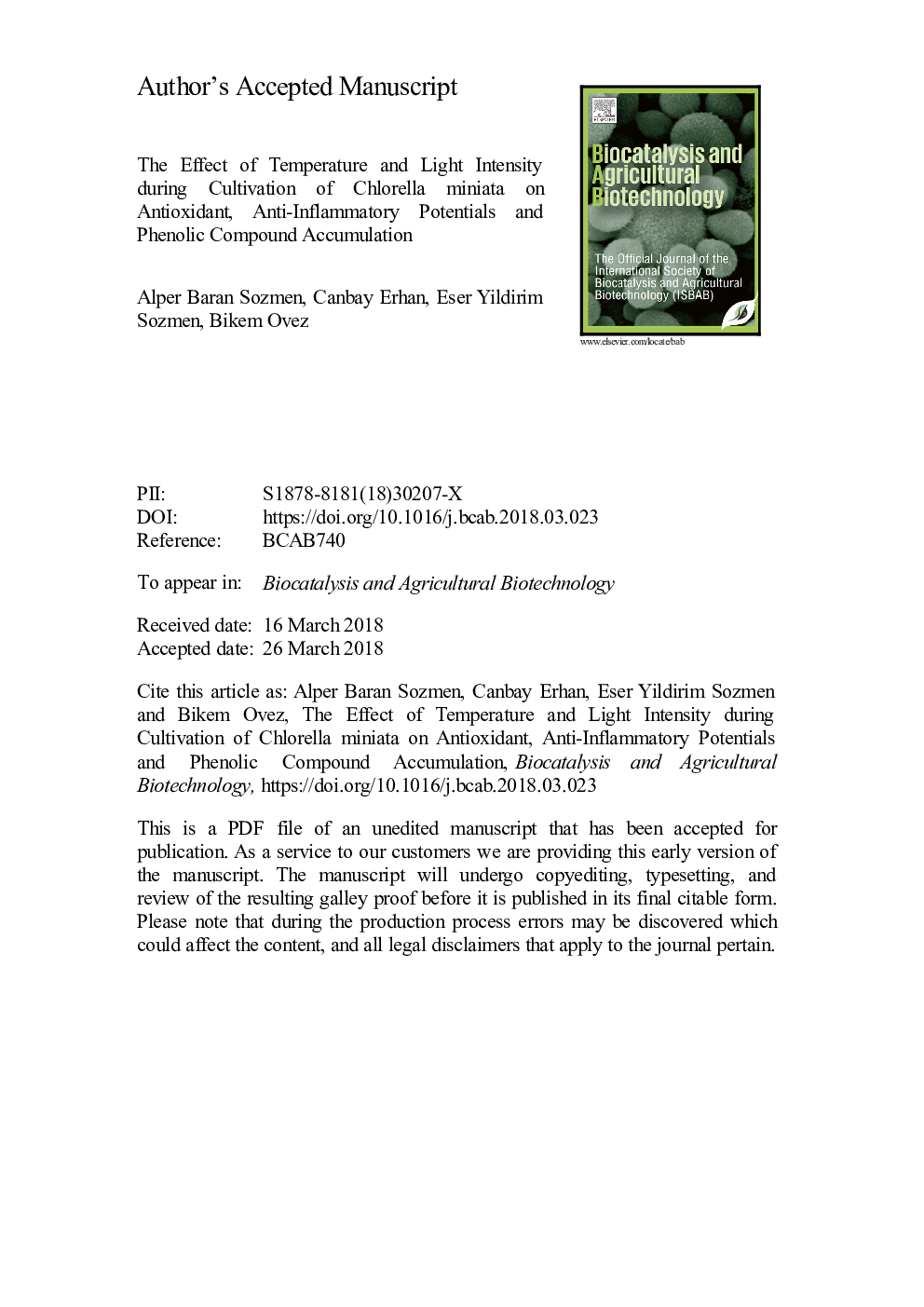| Article ID | Journal | Published Year | Pages | File Type |
|---|---|---|---|---|
| 8406013 | Biocatalysis and Agricultural Biotechnology | 2018 | 27 Pages |
Abstract
The purpose of this study was to see if the microalgae species Chlorella miniata possess an antioxidant and antiinflammatorypotential and to see if there is a correlation between the cultivation conditions and these potentials. For this purpose, cultivation of the algae under different growth conditions had been carried out; afterwards the soxhletextraction of the produced biomass had been completed. Lastly the assays of Trolox equivalent antioxidant capacity (TEAC), ferric reducing antioxidant capacity (FARP), total antioxidant capacity (TAO), xanthine oxidase inhibition, and hyaluronidase inhibition were studied using extracts of microalgae obtained from the different cultivation parameters. It's important to mention that this was the first study using these assays on species of Chlorella miniata and the first that utilized the cultivation parameters on microalgae. The results were, 22,91â¯mg/g algae TEAC, 776,70â¯mg/g algae gallic acid equivalent of FRAP and 37,07% xanthine oxidase inhibition with a concentration of 10,5â¯mg algae per ml ethanol, 65,39% of hyaluronidase inhibition with a concentration of 0,9â¯mg algae per ml ethanol. The effects of the cultivation parameters on these assays and the Lc MS/MS analyses for various phenolic compounds in the extracts were also a part of the study.
Related Topics
Life Sciences
Agricultural and Biological Sciences
Agricultural and Biological Sciences (General)
Authors
Alper Baran Sozmen, Erhan Canbay, Eser Yildirim Sozmen, Bikem Ovez,
